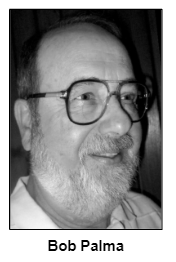Feb 7, 2020
(February 1, 2020) For many generations of South Bend residents, Studebaker Brothers - which later became the Studebaker Corp. - was the largest employer in town.
It all began in 1852 when the two oldest of five Studebaker brothers - Henry and Clement - opened a blacksmith shop, pursuing a trade they had been taught by their father. By the 1880s, Studebaker was the largest maker of vehicles - wagons, carriages and sleds, at that point - in the world.
Then came the heyday of auto production, with models like the Commander, the President, the moderately-priced Erskine and the luxurious Pierce-Arrow during the 1920s; the Land Cruiser in the 1930s; Champion Regal coupes in the 1950s; and the Avanti and the Daytona during the 1960s.
Although the final Studebaker car to be assembled in South Bend rolled off the production line in 1963, thousands of aficionados around the world continue to drive them.
Among the most popular destinations for visitors to South Bend is the three-story Studebaker National Museum, where galleries include exhibits of U.S. presidential carriages. Among the crown jewels displayed at the Studebaker museum: the Barouch carriage that transported the Lincolns to Ford's Theatre on the the night of the president's assassination in 1865.
For a motoring excursion through a broad landscape of Studebaker history, our two guests are:
Andy Beckman of South Bend, the archivist for the Studebaker National Museum and past president of the Society of Automotive Historians. The museum, which has 55,000 square feet and galleries of vintage cars and wagons, also houses the archives of the Studebaker Corp. and other South Bend businesses dating to the 1850s.
- Bob Palma of Brownsburg, who writes Studebaker columns for auto collector publications, including Hemmings Classic Car magazine; he also serves as the technical editor for the Studebaker Drivers Club's magazine, Turning Wheels. The owner of a fleet of four Astra white 1964 Daytona models (the last model year of South Bend production), Bob is retired from a career that included teaching auto mechanics at Arsenal Tech High School and editing industrial arts textbooks. During the mid-1950s, his father co-owned a Studebaker dealership.
Family connections have been part of the Studebaker heritage since the beginning. The fortunes of the wagon-making business are said to have been jump-started when John Mohler (J.M.) Studebaker, the third of the five brothers, returned from California to invest in his siblings' company. J.M. (1833-1917) had become wealthy by selling wheelbarrows to miners during the Gold Rush.

During World War II, Studebaker manufactured trucks and other vehicles used by the military. After the war, the company returned to making popular cars for middle-class Americans; our guest Bob Palma notes their 1947 models were touted with the slogan "first by far with a postwar car."
Other history facts:
- Perhaps the most famous Studebaker models were the "bullet-nosed" cars of the early 1950s. Bullet-nosed Champions, Commanders and Land Cruisers were manufactured then.
- Although Studebaker was based in South Bend, the Hoosier city wasn't the only site of its plants. In fact, a factory in Hamilton, Ontario, Canada, continued to build cars for a few years after assembly operations in South Bend closed in 1963. During our show, guest Bob Palma explains how he and other enthusiasts obtain replacement parts for the cherished Studebakers that they continue to drive.
- Studebaker cars competed in the Indianapolis 500 during the early 1930s. For the 1962 race, the newly introduced Daytona convertible was the pace car.